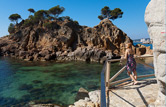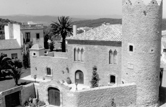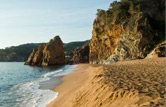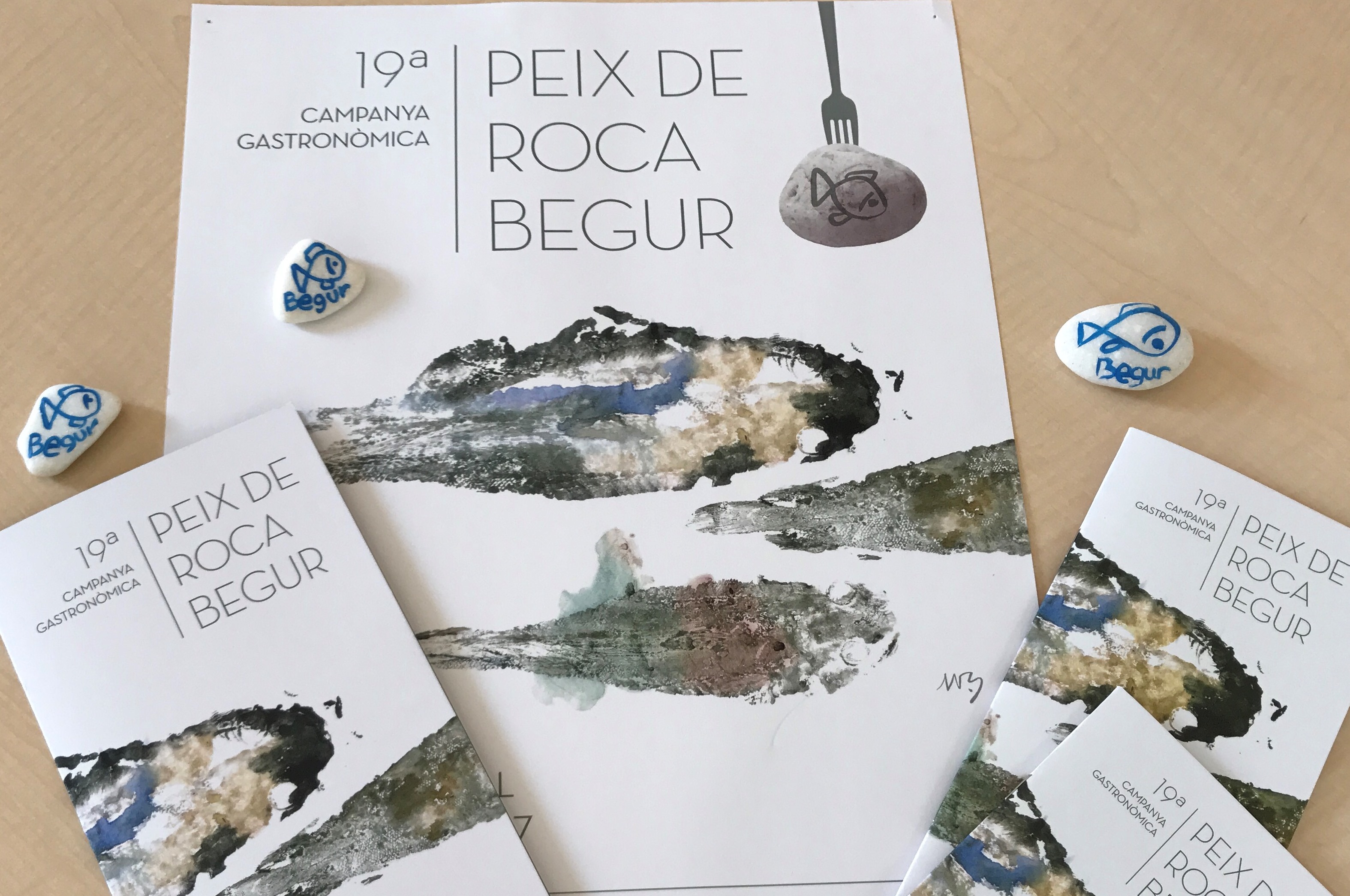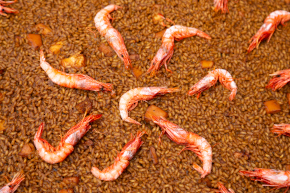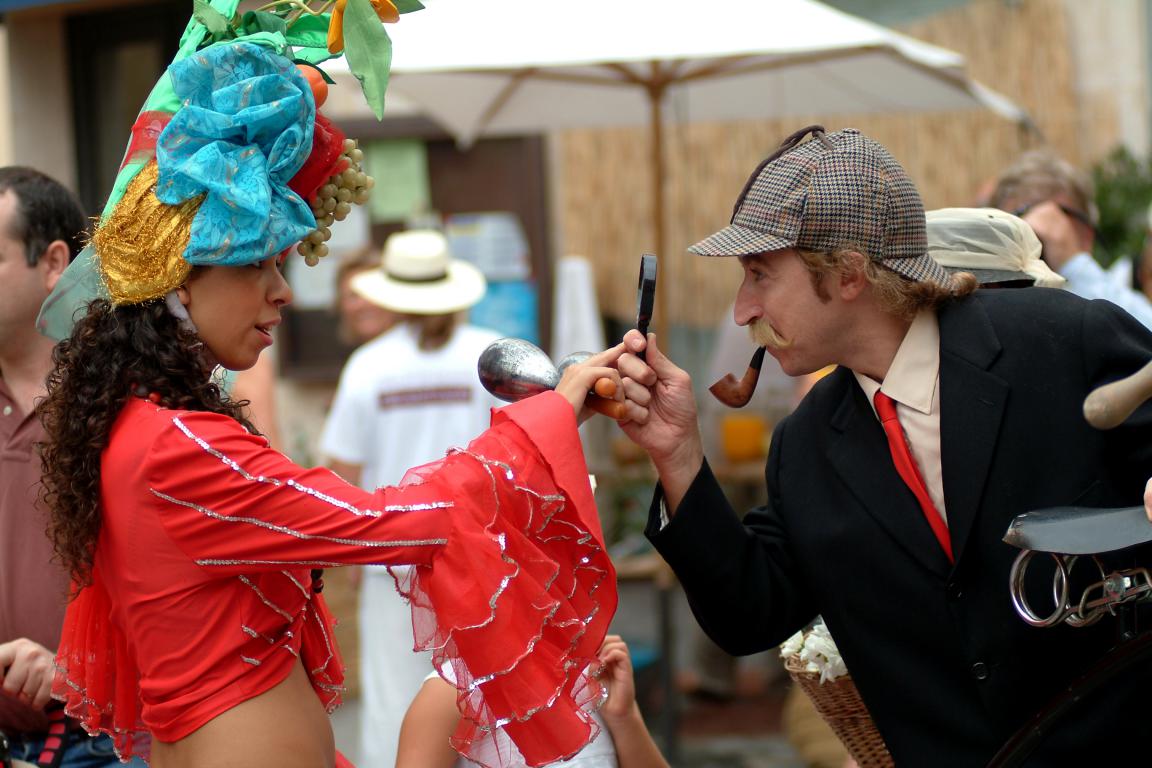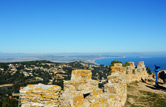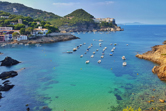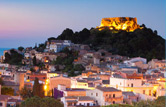
Culture
Carrer del Castell (Castell Street)
This street has many connotations of this village medieval period, as it is a narrow, rugged, wild-looking street. Its winding, stepped climb and the small houses wedged into the relief of the ground make up a very interesting architectural complex. In the medieval age, it was the natural access to the castle, and tradition says that the inhabitants of the street were obliged to offer a glass of water to the feudal Sirs who passed by, as a tribute.
Carrer de Vera (Vera Street)
The street name evokes important episodes of this village history. From the 14 to the 19th centuries, Begur inhabitants' leading economic activity was the search of coral. Sometimes they had to travel long distances to find it, so the expeditions to the southern coasts of Spain are recalled in the names of these two streets: Vera, a village on the Almería coast, and its parallel street, Sant Antoni, on the Alicante coast. The houses of these two streets are simple and modest style, as their owners belonged to the working class.
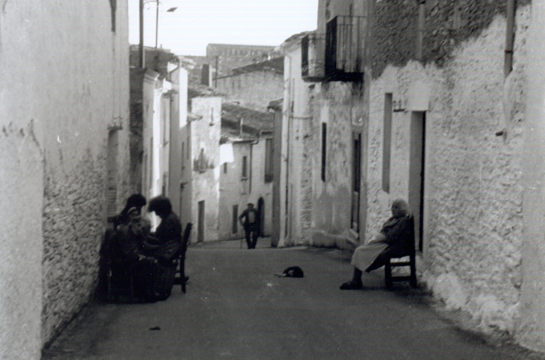
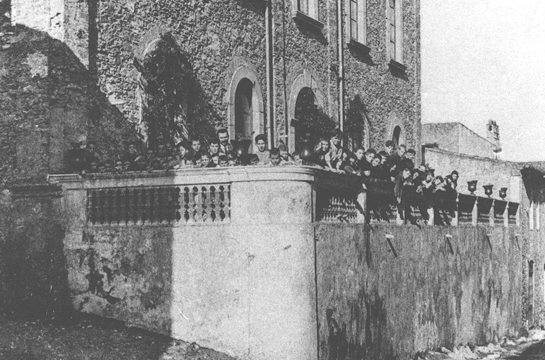
Casino Cultural
This cultural centre was created as a leisure and entertainment centre, hosting dance festivals, amateur theatre performances and other events. It was built using the stones of the Mas Carreras demolished defence tower, and it is one of the village modern period symbol, as it was an initiative of the indianos, and that is why it is also known as the "Casino Vell" (Old Casino) or "Casino dels Senyors" (Sirs Casino).
The Castle
The castle of Begur is of medieval origin. Throughout history, the castle has suffered various episodes of destruction, the last in 1810, during the Napoleonic Wars. Nowadays, at the top of the hill, we only can see the ruins of the medieval structure, as the merlots were built in 1956 to give the monument the aspect of the defensive building it was in the past. Thought that fact, it is used as an excellent viewponint, which perfectly overlooks to the north the broad bay of the mouth of the Ter river, closed by the singular profile of the Medes Islands; to the west, the rolling plain of the Baix Empordà region, with the Gavarres and the Pyrenees mountains as the backdrop; and to the south a panoramic of all the old quarter of Begur village and its monuments can be contemplated.
Begurenc artistic center
This local becomes one of the most important social and cultural life centers for the local people, from the last years of the s.XIX century until the beginning of the Civil War. I was founded by family Forgas Estrabau and factory Forgas workers. In 1918, Marià Frigola Forgas rented the dance room and theatre for project silent movies until almost 1978.
Chapel of Sant Ramon
This small hermitage is located in a strategic point of the village, at hte base of the castle, from where there is an exceptional view of the whole region: The Cap de Creus, l'Estartit, Pals and Sa Riera beaches, Montgrí mountain, etc...Because of this privileged situation, this point is called the Mirador de Sant Ramon (Saint Ramon viewpont), and known traditionally as "the Empordà Balcony". During the Civil War, 1936 to 1939, this building was totally destructed, and in 1951, thanks to a privete initiative, the chapel was reconstructed based on the original building.
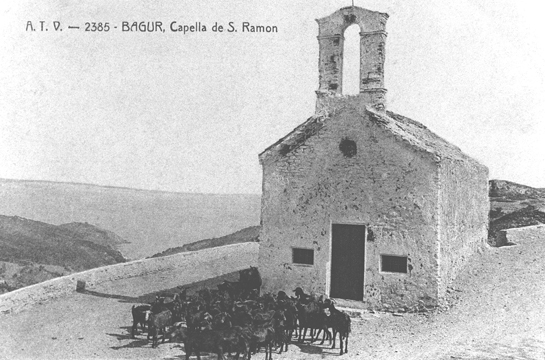
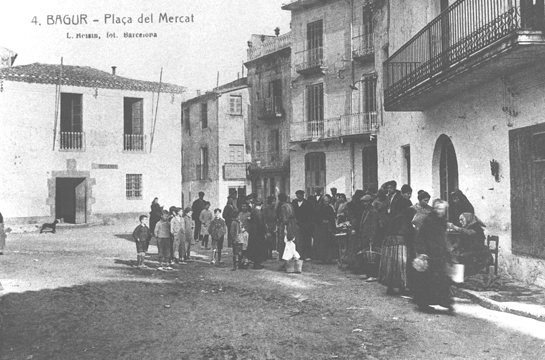
Es Cantó d'es Peix
Before the municipal market was opened in 1963, the market did in the Plaça de la Vila and there is where the fishermen put the fish stands. Every day in the morning from 7:30 to 8:00 a.m. the women of sailors arrived with baskets of fish to put it up for sale.
Escoles Velles
This educational and cultural building was the public school from 1961 until middles of the 70's, when a new school was build in the another part of the village. Nowadays it contains the library, the public nursery school, the exhibitions centre, the municipal radio station and the historical archive headquarters, which conserves an important collection of documents from the 15th century to the present day, with an interesting archive of pictures.
Es Pedrís Llarg
Due the situation of this long and stoned bench, it is one of the most important points of social life in the village, and it becomes an essential place to relax and chat. Their round and worn stones are witness to it's past.
Forgas square
This square offers an excellent panoramic view of the village. This point is very emblematic as in the last quarter of the 19th century; the prestigious Forgas cork stopper factory was located there. Unfortunately, this factory ws destroyed by a fire on 1919, which caused an important impact on the inhaitants' labour life. Later, on the 24th August 1963, the famous flamenco dancer Carmen Amaya gave one of her last performances in the place where the old Forgas factory was located. It is currently a completely renovated square with two sculptures symbolising parts of the Begur history have been erected: a monument representing a fisherman net-sewing needle, and a statue evoking the Carmen Amaya figure.
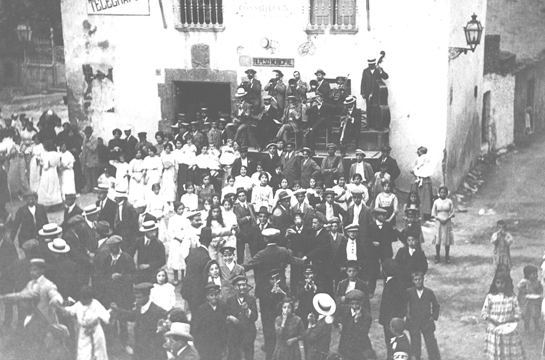
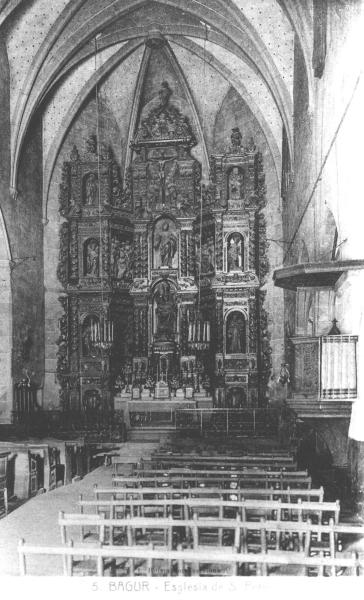
Church of St. Pere
There are records that this church already existed in 1199. The principal enlargement was carried out between the years 1600 and 1624, following the traditional forms of the Gothic style. Those on the northern side were partially removed in the 18th century to open the second parallel nave, the resulting space being dedicated to the cult of Santa Reparada. The exterior of the building is modest. The northern wall is adjoined by Es Pedrís Llarg, a long stone bench where the townsfolk sit and talk.


